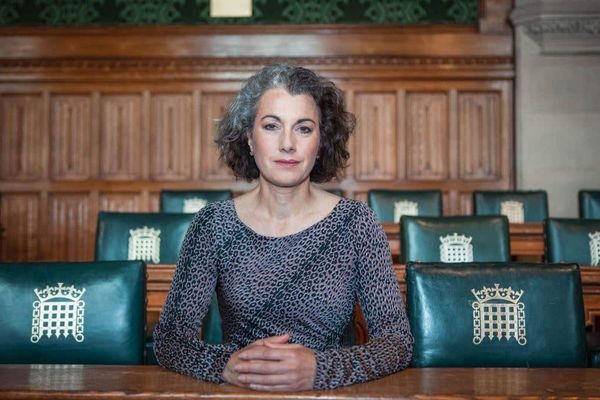
A federal trial is underway in Oklahoma that will determine whether the state’s lethal injection process for executions is constitutional—or, as critics charge, a form of state-sanctioned “torture.”
Nearly 30 Oklahoma death row inmates, all of whom have exhausted their appeals, filed the suit back in 2014. They argue the state’s three-drug cocktail of execution chemicals doesn’t sufficiently render inmates unconscious before they are killed. Instead, the prisoners argue, getting injected with the drugs renders them immobile and mute but still conscious, and feels like both “drowning” and being “burned alive.”
“In the end, Oklahoma’s lethal injection protocol cannot ensure executions that are safe, legal, and humane,” Jennifer Moreno, an attorney representing the inmates, told Oklahoma’s McAlester News-Capital, ahead of the trial starting in federal court on Monday. “Evidence from numerous executions shows that prisoners suffered pulmonary edema during the process—an agonizing experience akin to waterboarding.”
The state has defended its use of the three-drug execution protocol, saying it is safe and humane.
The case before federal judge Stephen Friot, comes after Oklahoma, home to one of the country’s most prolific, racist execution chambers, resumed executions after a half-decade hiatus, following a series of disastrous botched killings.
During initial arguments on Monday, experts on the side of the inmates testified that Oklahoma’s drug regimen wasn’t humane, and that there were easy ways to assure the executions didn’t cross over into unconstitutional cruel and unusual punishment.
Experts took particular issue with the drug Midazolam, the first of three drugs in Oklahoma’s execution protocol, which is used to sedate inmates before they are paralysed then killed.
“It’s not a drug that can keep you under," Dr Craig Stephens, an Oklahoma State University pharmacology professor, testified.
Without a strong enough sedative, the injection of later drugs in the process can feel like “a burning fire, veins on fire, very painful,” he added.
Mr Stephens recommended the state add a fourth drug, a powerful opioid like fentanyl, to assure that those being executed are well and truly put under, and advocated for removing the paralytic drug used in the process, so authorities will be able to hear from an inmate if they are experiencing painful side effects.
Oklahoma resorted to this three-drug process because pharmaceutical companies forbade a previous protocol from being used for executions.
It’s a problem that could easily be remedied, according to the testimony of University of Michigan medical chemist David Sherman, by the state using a public or private lab to manufacture safer drugs on its own.
“This could be done by undergraduate students with experience in organic chemistry,” he said on Monday.
In October, Oklahoma resumed executions with the killing of John Marion Grant, who was given a death sentence in 1999 for fatally stabbing cafeteria worker Gay Carter while in prison on unrelated charges.
During his execution, Grant began showing visual signs of distress, convulsing and vomiting, further proof that Oklahoma’s protocols were a form of “torture,” according to critics.
Autopsy results released in February suggest Grant inhaled his own vomit and Oklahoma’s lethal injection drugs caused him to suffer a sudden pulmonary edema during his execution, a feeling experts have likened to waterboarding.
An Oklahoma Department of Corrections spokesperson declined to answer in-depth questions about the execution from The Independent at the time, but said, “Inmate Grant’s execution was carried out in accordance with Oklahoma Department of Corrections’ protocols and without complication.”
Most recently, Oklahoma officials last month executed Gilbert Ray Postelle, 35, for his role in a 2005 quadruple murder at an Oklahoma City trailer park.
The inmates in the lawsuit have had their execution dates temporarily put on hold, but Postelle, Grant, and others were allowed to be killed because the men did not affirmatively select an alternative execution method on prison paperwork.
The men have said they either didn’t understand the choice being presented to them and its legal ramifications, or were religiously and ethically opposed to selecting the method of their own death.
Oklahoma put a temporary pause on executions beginning in 2015, after the state had a number of high-profile scandals in the death chamber, including injecting men with the wrong drugs, causing them pain and suffering.
The Independent and the nonprofit Responsible Business Initiative for Justice (RBIJ) have launched a joint campaign calling for an end to the death penalty in the US. The RBIJ has attracted more than 150 well-known signatories to their Business Leaders Declaration Against the Death Penalty – with The Independent as the latest on the list. We join high-profile executives like Ariana Huffington, Facebook’s Sheryl Sandberg, and Virgin Group founder Sir Richard Branson as part of this initiative and are making a pledge to highlight the injustices of the death penalty in our coverage.







